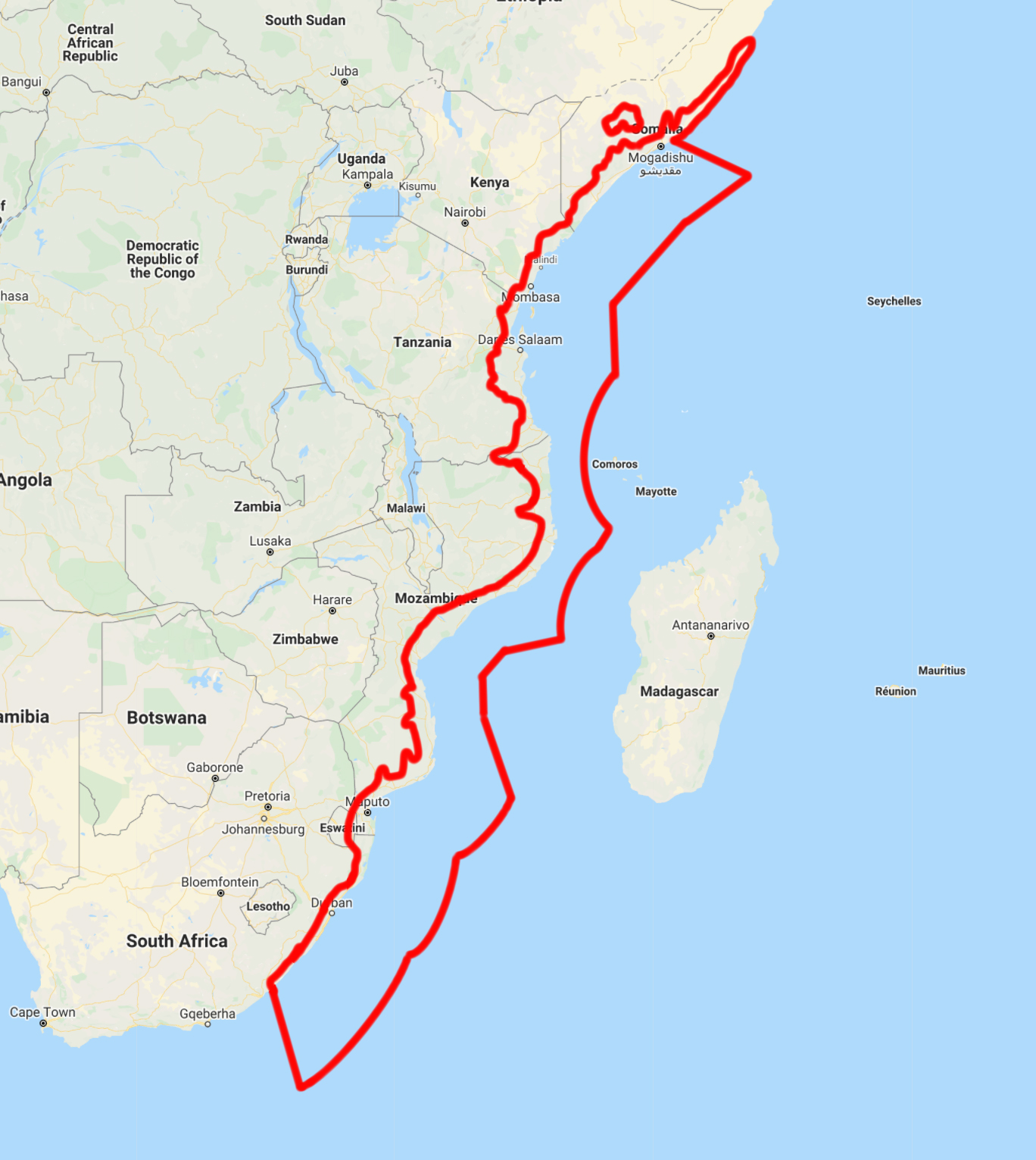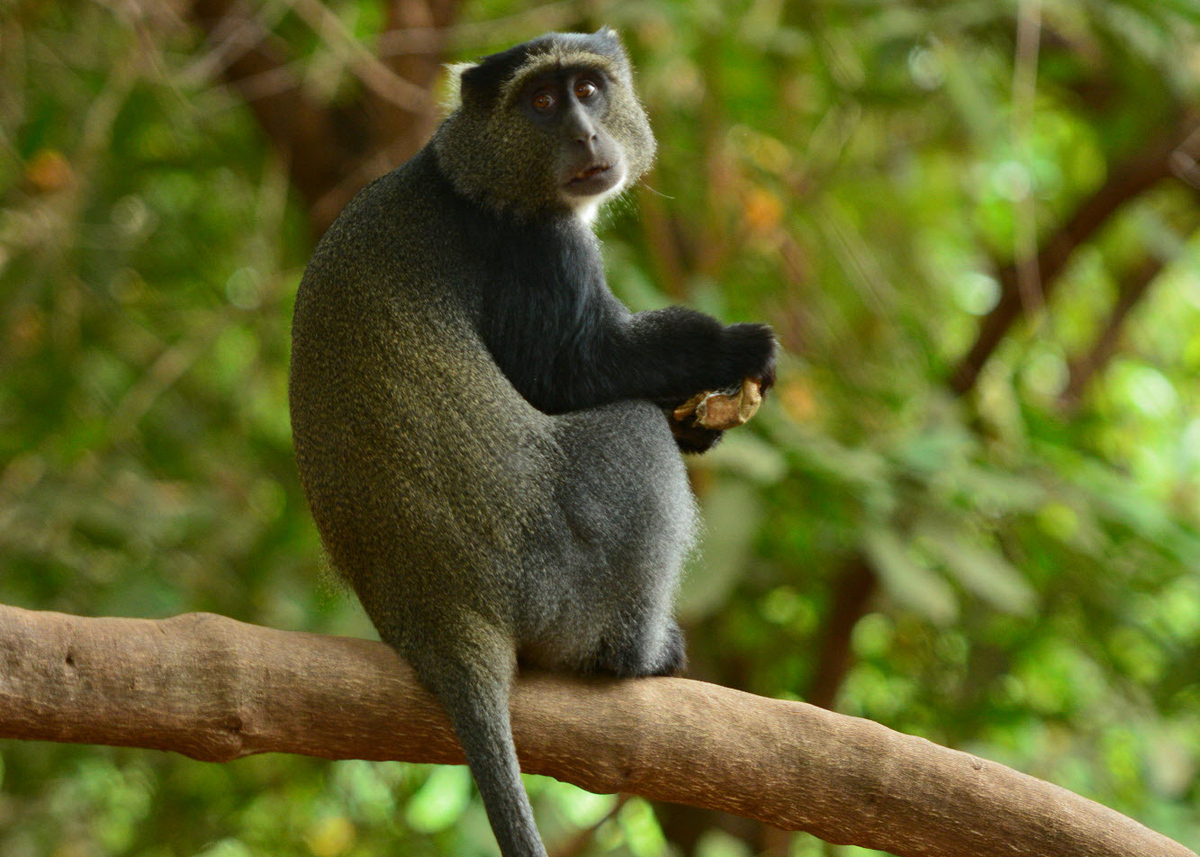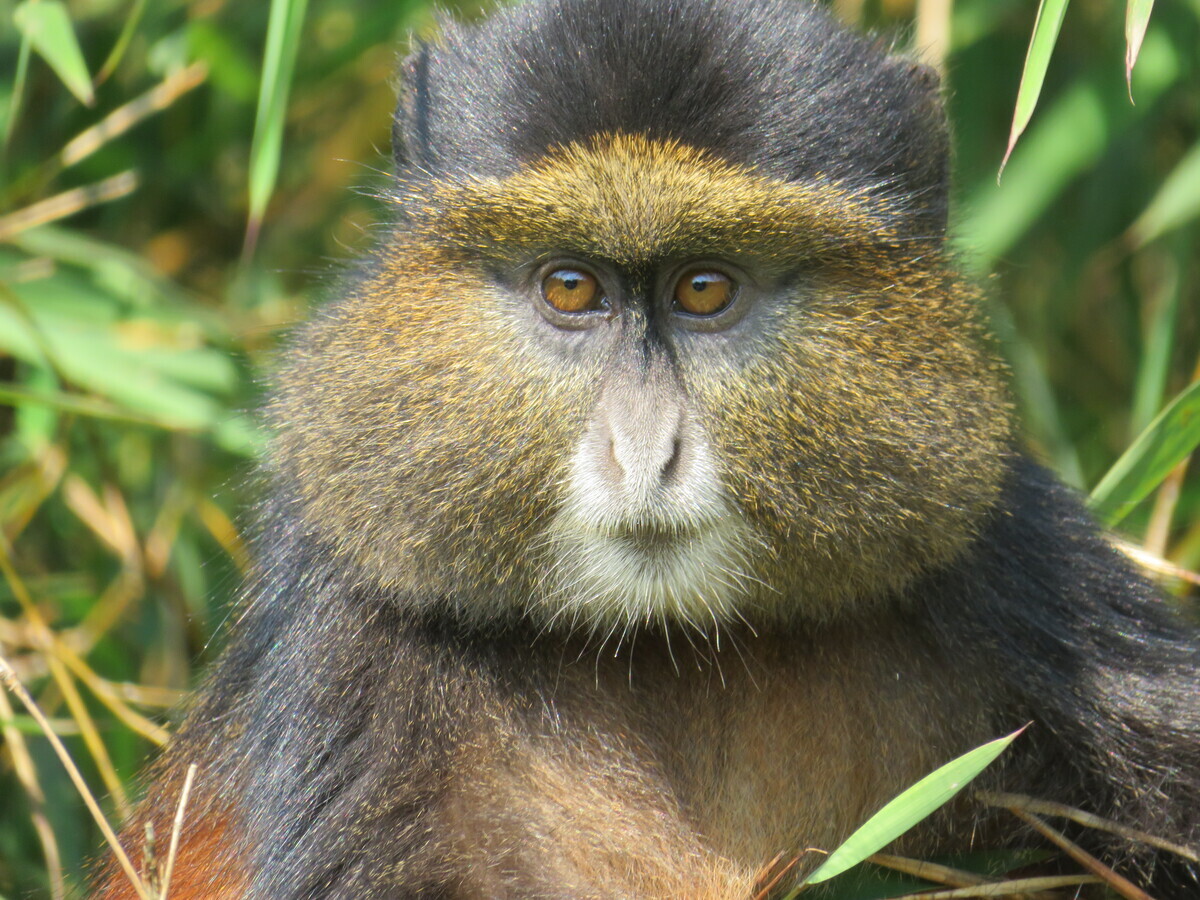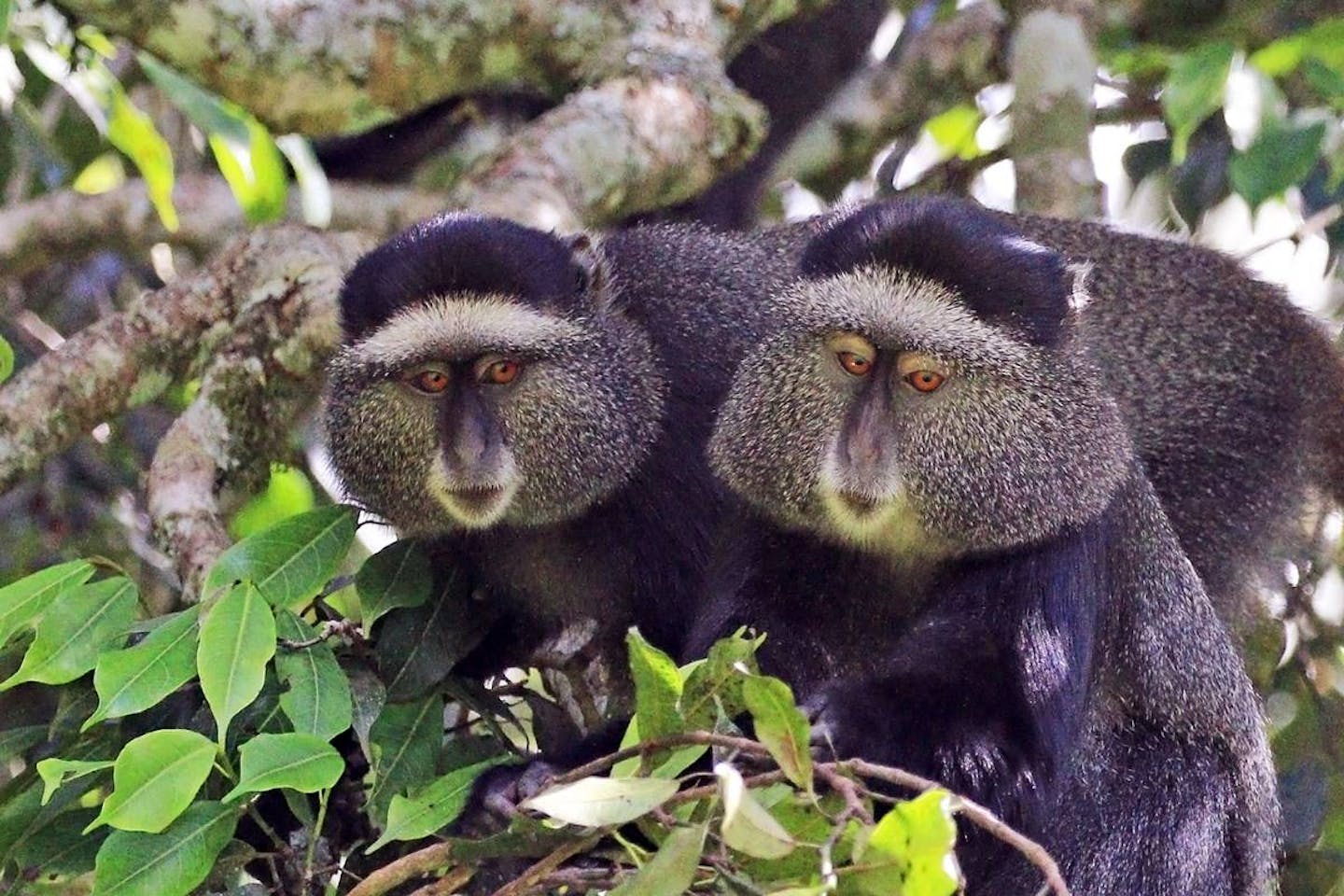The blue monkey: how primates amazingly help the rainforest flourish
- Nature Conservation
- Land Conservation
- Wildlife
- Mammals
- Pollinators
- Forests
- Mangroves
- Afrotropics Realm
One Earth's “Species of the Week” series highlights the flagship species of each of the 844 unique ecoregions contained within Earth’s bioregions.
Throughout the evergreen and bamboo forests of Central and East Africa lives a monkey with quite a peculiar look. Its facial coat gives the appearance of chipmunk-like cheeks paired with an extensive unibrow over piercing caramel-colored eyes. The blue monkey, which isn’t blue at all, has an olive-gray coat with yellowish patches on its face. Blue monkeys are significant seed dispersers in this ecosystem, keeping fruit flourishing in the jungle.

Blue monkeys are the flagship species of the East African Mangroves ecoregion, located in the East African Coastal Forests bioregion (AT7).
Their size ranges from 50 to 65 centimeters (22 to 26 in) in body length, with females weighing about 4 kilograms (9 lb) and males up to 8 kilograms (18 lb). Their long tail acts as a counterbalance and assists in the movement necessary for canopy life.
The digestive tract of the blue monkey has evolved to encompass a wide range of foods. Leaves, tree bark, bamboo, fungi, flowers, invertebrates, birds, eggs, snakes, lizards, and sometimes even small mammals like bats, rodents, and squirrels supplement the blue monkey. However, over 50% of their diet will be various fruits if available. As they move through the forest, their droppings leave behind fertilized fruit seeds which help replant and feed future generations of blue monkeys and other biodiversity in the jungle.

Female blue monkeys dominate the social structure as they stay in their family groups, while young males leave once they reach adulthood. Extremely territorial, blue monkey females are aggressive towards other groups. These ‘girl gangs’ are also combative to other species, except for red-tailed and red colobus monkeys. Interspecies grooming, the most intimate behavior, has been observed between these monkeys.
During the onset of the warm, rainy season is when breeding begins for blue monkeys. Females will attract males with body language that they are ready to copulate. Males will mate with multiple females, but females only mate with one male for life. Every two years, a female will give birth with a gestation period of about five months.

Although considered of least concern in conservation status, the habitat of blue monkeys is threatened by deforestation and human encroachment. The blue monkey hasn’t been as affected by these hazards because of its wide-ranging diet. They simply adapt to different food sources when one is no longer available. While this is good for the blue monkey, it further amplifies the negative feedback loop of the forest as the primary food source that is diminished is the fruit trees. Without eating copious amounts of these seeds, blue monkeys can’t help replant vegetation.
One way to help blue monkeys is by supporting environmental recovery projects throughout Africa and the Congo Basin. The University of California, Los Angeles is partnering with Indigenous communities to establish, test, and scale restoration and biodiversity areas. By working with those closest to these vulnerable regions, species like the blue monkey can directly benefit from traditional knowledge that has allowed humans and nature to coexist harmoniously for thousands of years.
Interested in learning more about the Afrotropic bioregions? Use One Earth's interactive Navigator to explore bioregions around the world.
Launch Bioregion Navigator


